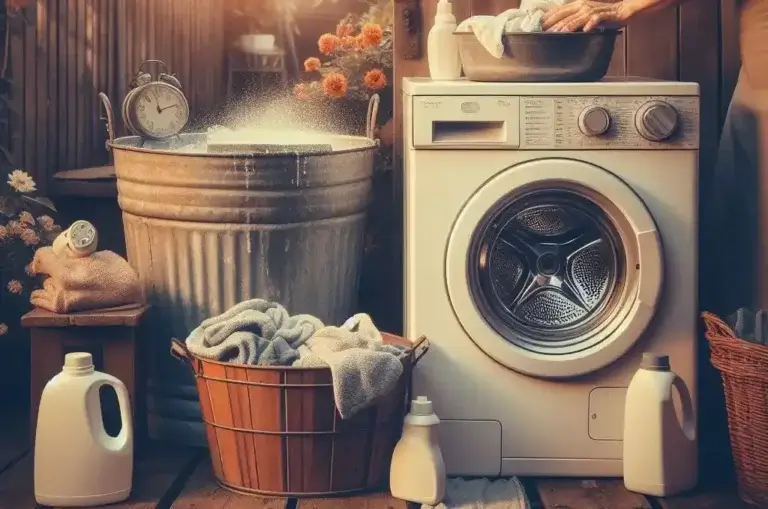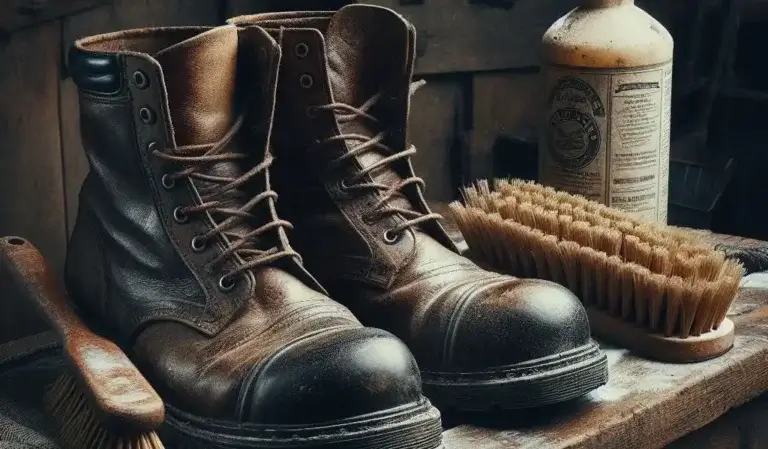Can You Wash Scrubs With Other Clothes? Your Guide to Properly Caring for Medical Scrubs
Wearing scrubs is part of the job for many medical professionals. Scrubs allow easy movement and keep clothes from getting dirty during long hospital shifts. But with scrubs being exposed to germs, bodily fluids, and other contaminants regularly, knowing how to properly wash scrubs is critical.
Can you wash scrubs with regular clothes? Should you wash medical scrubs separately? What’s the best way to wash scrubs while killing bacteria and removing tough stains?
This complete guide covers everything you need to know about Can You Wash Scrubs With Other Clothes and Care for your Scrubs, from washing and drying to stain removal and disinfection. By following proper scrub care, you can increase the life of every pair while preventing the spread of infection.
Table of Contents
Why It’s Important to Properly Wash Scrubs
Medical scrubs easily pick up germs, bodily fluids, and other contaminants during a hospital shift. Bacteria and viruses can survive on fabric for extended periods.
If you wear dirty scrubs into your home or launder them with regular clothes, you risk spreading the infection to yourself and your family. Contaminated laundry also puts patients at risk if you show up to work with lingering germs on your uniform.
Properly washing scrubs helps stop the spread of illness by killing microbes that cause infection. Using very hot water, bleach, and detergent designed for disinfection allows you to disinfect your scrubs while removing stains.
Washing scrubs also helps you look professional and prevent odors. When you wash medical scrubs after every shift, you’ll have a fresh, clean uniform ready for your next hospital visit.
Can You Wash Scrubs With Other Clothes?

Because of frequent exposure to bodily fluids and infectious microbes, washing scrubs separately is highly recommended.
Here’s why you should wash your scrubs separately from regular clothes:
- Prevents cross-contamination of germs and bacteria
- Allows using disinfectant detergent and very hot water to kill microbes
- Avoids getting tough stains on regular laundry
- Lets you pretreat scrub stains before washing
Washing scrubs separately gives you full control to tackle contamination. Extremely hot water or bleach may damage everyday clothes but can be used safely when washing scrubs alone.
You should also wash scrubs separately if wearing white uniforms. The heat and chemicals needed to properly disinfect scrubs can cause colors to bleed from everyday clothing onto white scrubs.
Washing scrubs alone does require more time and loads of laundry. But it’s a small price to pay to prevent the spread of illness and keep all garments looking their best.
How to Wash Scrubs in a Washing Machine

Follow these steps for washing scrubs in a washing machine:
1. Check Scrubs for Visible Contamination
Before tossing them into the hamper, check your scrubs for blood, bodily fluids, or other visible contamination. Use gloves to protect yourself when handling.
For small stains, try pretreating the area with stain remover, an ammonia-based cleaner, hydrogen peroxide, dish soap, or distilled white vinegar. For larger spills on scrubs, use an approved hospital disinfectant.
2. Place Scrubs in Plastic Bag
After checking for stains, place your scrubs inside a plastic bag and tie it closed. This helps contain germs during transport and keeps other laundry in the hamper clean.
3. Wash Scrubs on Hottest Setting
Wash scrubs alone or with other medical uniforms to allow using very hot water. Set your washing machine to the highest available temperature, at least 130°F if possible.
Hot water helps kill bacteria and properly disinfect scrubs. It also helps dissolve and remove stubborn stains.
4. Use a Disinfectant Detergent
Skip the regular laundry soap and use a hospital-grade disinfectant instead. Check that your detergent contains antimicrobial ingredients proven to kill illness-causing pathogens.
The disinfectant detergent helps sanitize your scrubs while lifting dirt and stains. It kills bacteria even in cool water washes.
5. Add Bleach if Allowed
Check scrub tag guidelines, but white cotton scrubs can usually handle bleach. Add 1⁄2 to 1 cup of bleach during the wash cycle to further disinfect uniforms.
Just remember that bleach may degrade stretchy scrub material over time. Also avoid colored scrubs, as they can remove dye.
6. Use Extra Rinse Cycle
After washing with disinfectant, use an extra rinse cycle. This ensures all detergent and bleach residue gets removed, leaving scrubs fresh and safe for skin contact.
7. Remove Promptly and Dry
Once finished, immediately remove the scrubs from the washer. Leaving them wet allows mold and mildew to grow. Move to the dryer and dry thoroughly on high heat.
These best practices for using a washing machine allow you to properly disinfect scrubs while removing almost any stain. They help protect you from carrying diseases while keeping uniforms clean and odor-free.
Tips for Washing Scrubs by Hand
In some cases, you may need to wash scrubs by hand:
- Removing a stain that needs immediate treatment
- Disinfecting scrubs after exposure to infectious disease
- Travelling without laundry facilities
Follow these simple steps for effective hand-washing of medical scrubs:
1. Rinse Scrubs Under Cold Water
Rinse contaminated scrubs under a stream of cold water. This helps prevent stains from setting and dilutes some microbes.
2. Fill Sink and Pretreat Stains
Fill the sink or tub with cool water and add a hospital-grade disinfectant. Gently rub the product into any visible stains before scrubbing.
3. Wash with a Disinfectant Cleaner
Submerge scrubs in the disinfectant solution. Use a soft-bristle scrub brush and wash for 5-10 minutes, focusing on stain areas. The surfactants and antimicrobial ingredients work together to lift dirt while killing illness-causing germs.
4. Drain and Refill with Clean Water
Drain dirty solution and refill sink or tub with clean cool water for rinsing. Avoid using hot water when hand washing, as heat can degrade elastic scrub fibers over time.
5. Rinse Thoroughly
Agitate and move scrubs continuously under fresh water for 3-5 minutes. This removes all soap residue that could irritate the skin.
6. Squeeze Out Water and Dry
After rinsing, squeeze excess moisture from scrubs. Move them immediately to the dryer, line dry, or lay flat to dry. Avoid leaving wet, as this allows mold and bacteria to multiply.
While more labor-intensive than machine washing, hand scrubbing with disinfectant allows you to attack stains immediately while sanitizing your uniforms by hand.
How to Dry Scrubs after Washing

Drying is just as important as washing when it comes to proper scrub care. The right drying method kills remaining germs while minimizing shrinkage and wear.
Follow these tips when drying washed scrubs:
- Tumble dry on high heat. High temperatures help eliminate bacteria missed during washing.
- Hang dry delicate scrubs. Air drying prevents heat damage to stretchy, moisture-wicking synthetics.
- Lay flat to prevent shrinkage. Flatten scrubs on a drying rack or towel to maintain fit.
- Always allow scrubs to dry completely before wearing or storing.
The best practice is using a hot tumble dry right after washing scrubs. High heat dries scrubs fastest while blasting away any lingering germs or microbes. Just take care when drying spandex blends, which can shrink, pill, or melt under high temperatures over time.
Removing Stains from Scrubs
Medical scrubs easily pick up tough stains from bodily fluids, grime, ink, and other messy contaminants. But you can remove even set-in stains by pretreating with specific removers before washing.
Here are the best tips for removing common stains from scrubs:
- Blood: Rinse with cold water then soak in ammonia or enzyme pretreat.
- Urine/vomit: Pretreat with hydrogen peroxide or baking soda paste.
- Oil/grease: Dish soap or distilled white vinegar breaks up lipid stains.
- Ink: Alcohol-based products like hairspray or hand sanitizer dissolve stubborn ink marks.
- Sweat: Rub lemon juice or aspirin paste into the pit and collar stains.
- Betadine/iodine: Soak in washing soda or non-chlorine bleach before washing.
Always wear gloves when handling contaminated scrubs to avoid self-infection. For best results, allow pretreatments to soak for 10-15 minutes before washing.
Combining the right chemical stain removal products with proper machine washing allows even the toughest dried bodily fluids and grime to wash out of medical uniforms completely.
Disinfecting Scrubs from Germs
In addition to washing methods that kill and remove microbes, you may need to occasionally disinfect scrubs for complete sterilization. This is critical after exposure to infectious diseases.
First, spot-treat any visible bodily fluid stains with a hospital-grade disinfectant. Allow the antimicrobial cleaner to soak for 10 minutes.
For full disinfection of scrubs, prepare a disinfectant solution with:
- 1 part bleach per 9 parts cool water OR
- An approved hospital disinfectant used as directed
Submerge the scrubs, allowing full contact with the solution for 10 minutes of dwell time. Rinse thoroughly with clean water afterward.
This bleach or commercial disinfectant technique eliminates over 99% of germs and pathogens. It sterilizes both the surface and interior scrub fibers, neutralizing infectious microorganisms.
Caring for White Scrubs
White nursing scrubs easily show stains and require extra care. Here are some top tips:
Washing White Scrubs
- Bleach is your friend for whiteness and disinfection
- Wash with other white laundry on a hot cycle
- Use color-safe bleach alternative if needed
- Pre-soak in oxy clean to remove dingy buildup
Preventing White Scrub Stains
- Wear an apron to protect from spills
- Immediately rinse contaminants
- Change frequently if dealing with lots of stains
Whitening Dingy Scrubs
- Sun drying helps bleach and brighten
- Boil uniform in distilled white vinegar
- Soak in hydrogen peroxide overnight
Put in the extra effort to care for white scrubs. Your crisp uniform helps convey professionalism in patient interactions.
Extending the Life of Your Scrubs
As the old saying goes: An ounce of prevention is worth a pound of cure. While knowing how to remove stains from scrubs is useful, preventing scrubs from getting dirty and damaged, in the first place, is a much easier approach.
Follow these tips to keep scrubs looking their best while minimizing wear:
- Have multiple sets of scrubs to rotate usage
- Change out of scrubs before leaving the hospital
- Avoid using abrasive brushes or bleach excessively
- Wash after each use to prevent odor buildup
- Line or flat drying is gentler than high-heat
- Mend small holes and tears immediately
Rotating between scrub sets and washing promptly prevents overuse damage. Handling with care maintains the structural integrity of the fabric. This allows quality medical uniforms to last through years of frequent use and washing.
Frequently Asked Questions
Still have questions about washing scrubs? Below are answers to some often-asked questions:
Can you wash scrubs with regular clothes?
It’s not recommended. Washing scrubs with other laundry risks cross-contamination of germs, bacteria, and difficult stains. Always wash separately if possible.
How should you wash printed scrub tops?
Turn printed scrub tops inside out before washing to prevent abrasion damage to prints and logos. Wash in cold water on a gentle cycle. Air or line drying is best for decorated scrubs.
How often should you wash scrubs?
Scrubs worn in hospitals or medical settings should be washed after every single shift. Frequent washing prevents germ transfer while keeping uniforms looking and smelling fresh.
What temperature should you wash scrubs?
Use the hottest water possible, at least 130°F, to properly disinfect and kill pathogens during scrub washing. High heat also helps remove stubborn stains.
Can you shrink scrubs when washing them?
Exposing scrubs to excessive heat can cause shrinkage over time as fibers break down. Use gentle cycles and line drying if possible or wash mixed-material scrubs in cold water.
The Right Way to Wash and Care for Medical Scrubs
As you can see, properly washing and caring for scrubs takes some extra effort. But putting in the work has big payoffs for your health, your family, and your patients. Preventing germ transfer, eliminating stains, and extending the usable life of every set of scrubs allows them to keep working hard shift after shift.
So be sure to wash uniforms separately and on hot cycles whenever possible. Invest in some stain pretreatment products to keep white scrubs gleaming. And rotate between multiple sets to minimize wear and tear.
By looking after your scrub wardrobe, it will look after you in return. Your fresh, professional uniforms will help provide safe and effective patient care visit after visit.








